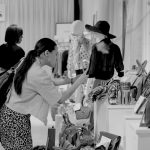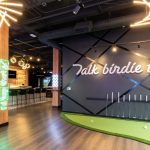Outdoor and active lifestyle retailers and vendors continued to report solid increases in both sales and profits in the second fiscal quarter of 2010. While this adds to the evidence that the outdoor sector is well on its way to a rebound, reports surrounding a late summer slump in consumer activity continue to keep the industry cautious. In spite of these strong results in the first half of the year, consumer confidence, spending and unemployment are all major concerns.
With the last of the second quarter reports now filed with the SEC, The B.O.S.S. Report presents a wrap-up of industry public company results shown in the chart on page 3 of this issue. Results are posted for those companies that have reported results for the period ended closest to the end of March. Because the report is not a total picture of the entire industry, BOSS feels the total numbers are less significant than the trending information provided in the percentage increases and decreases.
Looking at all outdoor companies covered in this report both vendors and retailers the industry saw top line sales increase 12.0% on average while profits surged 173.9%. Gross margins increased 160 basis points which helped the average return on sales (a metric measuring profitability as a function of sales), more than double from 1.9% in the first quarter of 2009 to 4.8% in the second quarter of 2010. Much of the increase in profits can be attributed to lower SG&A expenses and considerable inventory reductions at both the retail level and from vendors.
Softgoods companies (footwear and apparel) reported the strongest top-line and bottom line growth, doubling profits for the quarter. Sales growth was wide-spread throughout the Softgoods sector, with every company posting at least mid-single digit increases except for LaCrosse.
There was no clear disparity between footwear companies and apparel companies. The strongest top-line growth rate came from the Deckers while the biggest swing in profits came from Crocs, which jumped from a $30.3 million loss in Q2 of 2009 to a profit of $32.3 million in Q2 of 2010.
Gross margins also jumped in the second quarter for Softgoods vendors. Just like in Q1, Every company reported climbing margins during the second quarter except for Rocky Brands, which reported a nominal 3 basis point decline in margins.
Among Softgoods companies, return on sales increased to 5.8% in 2010 compared to 0.8% for the same period in 2009.
Footwear companies and apparel companies realized equally strong net income growth in the quarter. Deckers net income jumped more than 200% for the quarter while Wolverine World Wide net income jumped 117.8% during the quarter.
Softgoods companies also realized a nice mid-single digit decline in inventories, which also helped boost profits.
Hardgoods companies are reaping the benefits lower SG&A and higher gross margins. These manufacturers are clearly making some solid improvements to operating costs and their overall manufacturing expenses. However, the Hardgoods sector still faces some significant challenges as consumers begin to shy away from big-ticket items and macro-economic factors impact this sector more heavily than softgoods.
Every Hardgoods company except Head posted solid gross margin increases during the quarter. Net income growth was very strong during the quarter with the sector more than doubling its bottom line on average. Among Hardgoods companies, return on sales doubled, jumping up to 6.4% in the first quarter of 2010 compared to 3.1% in the first quarter of 2009. Inventories were up slightly among hardgoods companies, increasing on average 0.4% for the quarter.
Retailer’s sales were also up for the quarter. On average sales increased 10.1% with Cabela’s reporting the only decline in sales in the second quarter. Excluding Cabela’s, sales would have been up 14.1% on average. Every retailer covered in this report that reported stronger sales was also able to boost gross margins. For Lululemon, margins were up over 6.5 full percentage points. With margins up, and inventories down, retailers were able to increase net income considerably. Last year, the average retailer’s second quarter net income was $42 million. This year that average increased to $66.7 million. Every retailer covered in this report either improved its net income or reduced its net loss during the quarter.
Retailers’ return on sales also improved considerably in the second quarter, with the average jumping to 2.7% in Q2 of 2010 compared to 1.9% in the second quarter of 2009.
Overall, there is no arguing that the first half of the year was very strong for the outdoor industry. Nearly all metrics were up for the publically reporting companies in both the first and second quarters. However, a challenging retail environment looms ahead as July and August sales reports signal a considerable slow-down in consumer spending and nearly one in ten consumers are still unemployed. Looking ahead, the back-half of the year will certainly see a more challenging retail environment.















